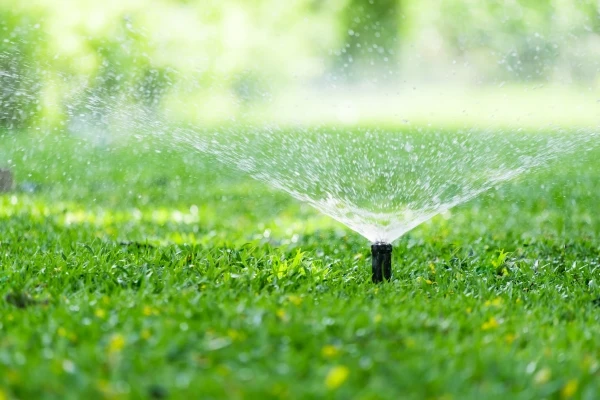How to Avoid Overwatering Your Landscaping This Spring

Lawn watering may seem like a simple enough task but overwatering your lawn and your other landscaping can be just as bad for them as underwatering. Too many property owners' overwater both their lawn and landscaping without even realizing it. To avoid overwatering – and all the problems that come with it – it is important to take the right steps. These steps include learning about your soil type, setting a watering schedule, monitoring your irrigation system, and checking for common signs of overwatering. In what follows, we will take a closer look at each one of these steps.
Know Your Soil Type
In many ways, the amount of water your landscaping needs depends on what type of soil you have. For this reason, knowing your soil type can help you determine whether you are watering too much. Sandy soil, for example, drains quickly. Simply watering more will not help plants or trees grow in sandy soil, because the water will drain below the roots. Clay soils, on the other hand, tend to become heavy when saturated and can actually prevent plants from getting enough moisture to the roots. Also, water tends to pool quickly on top of clay soil, leading to wasteful runoff. There are 4 additional types of soil that each have their own water needs. Learn more about them by visiting this informative article. You can test your own soil to determine what type you have, or call in the professionals to help.
Set a Watering Schedule
One of the best ways to avoid overwatering your landscaping is to set a watering schedule. If you have an automatic sprinkler system, this could be as simple as adjusting your system settings. Learn more about the advantages of automated sprinkler systems here. If you are watering manually, it is still best to water at about the same time of day and on the same days of the week. For best results, water your lawn and other plants early in the morning. This will help prevent evaporation and wasted water. It’s also important to adjust how often you water to ensure that your plants aren’t getting too much water. For example, most lawns need about an inch of water per week, but this can vary depending on where you live, what type of grass you have, and how hot the weather is. In most cases, watering your lawn for about 30 minutes twice a week is an ideal schedule. But it’s important to check your soil after 15 minutes and stop watering once it is moist about six inches below the surface. For trees and shrubs, water until the soil is moistened between 8 to 12 inches down. Learn more about watering schedules by visiting this article.
Related Topic: The Ins and Outs of Irrigation
Monitor Your Irrigation System
If you have an automatic sprinkler system, it can be easy to “set it and forget it.” In fact, this is one of the biggest advantages of such systems: it makes caring for your lawn and landscaping easier day-to-day. But using this approach can not only waste water, it can also cause problems from dead plants to soil erosion. To avoid overwatering your landscaping, it’s important to check your irrigation system regularly to ensure that it is functioning properly. One way to check your system yourself is to turn it on and then examine each sprinkler head for leaks, bubbles, or incorrect spraying patterns. It’s also important to watch for dry spots or puddles in your yard, as well as an excess of running water, as these may indicate a broken sprinkler head or underground pipe. If you notice any potential issues, it may be time to call in the irrigation pros.
Look for Signs of Overwatering
Another important way to avoid overwatering your landscaping is to know and watch for the signs. A lawn or landscape that is being watered too much will often show symptoms, including soil that is constantly wet, leaves that turn yellow or have brown spots or edges, or if the base of the plant stem feels mushy. As soon as you spot any of these signs, it’s important to reassess your watering schedule and adjust it accordingly. But you can also monitor your landscaping for overwatering before it becomes detrimental to your plant health. About once a month, check your soil after watering to ensure that water reaches the roots but isn’t puddling up or running off. You can also amend your soil to help it retain moisture better, which may help reduce the amount of watering you need to do overall.
Get Professional Watering Assistance
Figuring out your optimal watering schedule and soil type can be a challenge. Even with the right information, it takes time and energy to get your watering schedule and amounts correct. We know that you are busy with family and life’s many demands: wouldn’t it be great to have someone help you with your landscaping and watering needs? The pros at The Grounds Guys offer professional assistance for all your landscaping needs, from sprinkler systems to lawn care and more. To learn more about our quality services, request an estimate today!
 Click to call
Click to call


